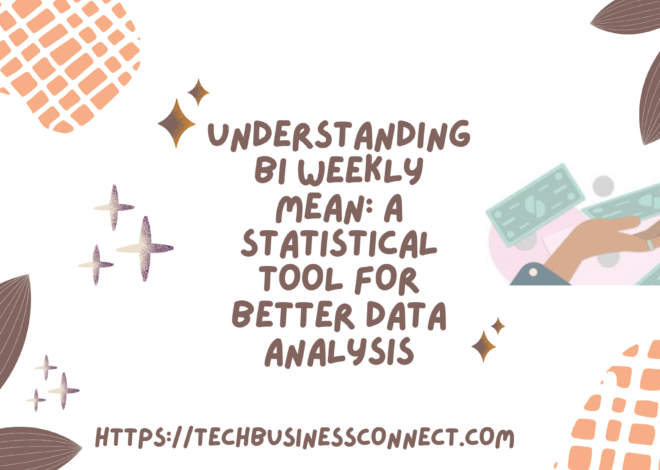
Bed and Breakfasting: A Guide to Understanding This Popular Investment Strategy in 2024
Introduction
The world of investing is rich with strategies that cater to different goals, risk tolerances, and timelines. Among the myriad of approaches, “bed and breakfasting” stands out as a unique practice with a particular historical and tax-related context. While the term might evoke images of cozy countryside inns, in the realm of finance, it refers to a tax-saving strategy predominantly used by investors to manage capital gains tax liabilities. This article delves into the concept of bed and breakfasting, its origins, how it works, its advantages, and the changes in regulations that have impacted its use.
What is Bed and Breakfasting?
Bed and breakfasting is a term primarily associated with the UK investment landscape. It refers to the practice of selling an investment asset, such as stocks, at the end of one trading day and then repurchasing the same or similar asset at the start of the next trading day. The primary purpose of this strategy is to realize a capital loss or gain, which can then be used to offset other gains, thereby reducing the investor’s overall tax liability.
This strategy is named “bed and breakfasting” because, like the metaphorical act of sleeping overnight and returning, the asset is only absent from the investor’s portfolio for a short period, typically less than 24 hours. By selling and repurchasing in this manner, the investor remains largely unaffected in terms of portfolio composition and potential for returns, while achieving a tax benefit.
The Mechanics of Bed and Breakfasting
To understand bed and breakfasting better, it’s essential to break down how it works. Suppose an investor owns shares in a company, and the market value of those shares has decreased. By selling these shares, the investor can realize a capital loss. According to the traditional bed and breakfasting strategy, the investor would then repurchase the same shares the next morning. The realized capital loss can then be used to offset any capital gains realized elsewhere in the investor’s portfolio, thereby reducing the taxable amount.
For example, if an investor bought shares in Company A for £10,000 and those shares are now worth £8,000, selling them would realize a loss of £2,000. If the investor then has a capital gain of £2,000 from another investment, the capital loss from Company A can offset the gain, potentially resulting in no capital gains tax payable.
The Historical Context and Tax Regulations
Bed and breakfasting became a common strategy for many investors in the UK due to its simplicity and effectiveness in managing tax liabilities. However, tax authorities, recognizing the potential for abuse, have put measures in place to prevent excessive use of this strategy.
In the UK, changes to tax laws in 1998 introduced what is known as the “30-day rule” or the “anti-bed and breakfasting rule.” Under this rule, if an investor sells shares in a company and buys the same or equivalent shares within 30 days, the sale and repurchase are matched. This means that the sale is not considered a disposal for tax purposes, thus nullifying the benefit of realizing a capital loss for offsetting other gains. The rule was implemented to prevent investors from artificially reducing their tax liability through short-term trading practices that did not reflect genuine changes in investment strategy.
Bed and Breakfasting in the Modern Context
Despite the introduction of the 30-day rule, bed and breakfasting hasn’t entirely disappeared. Investors have found alternative approaches that comply with regulations while still allowing for some degree of tax management. Two of the most commonly used strategies include:
- Bed and Spousing: This involves transferring the asset to a spouse or civil partner instead of repurchasing it directly. If one spouse sells an asset at a loss, the other can buy it back without breaching the 30-day rule, thereby maintaining the same portfolio position while utilizing the tax loss. However, this requires that both partners have their own investment accounts and are aware of the tax implications and potential benefits.
- Bed and ISA (Individual Savings Account): Another approach is to sell shares and then repurchase them within an ISA. Since ISAs offer a tax-free environment for investments, capital gains realized within them are not subject to taxation. This allows the investor to maintain their position in the asset while benefiting from the tax-free status of the ISA.
- Bed and SIPP (Self-Invested Personal Pension): Similar to the ISA approach, this strategy involves selling shares and repurchasing them within a SIPP. SIPPs provide tax advantages for retirement savings, including tax relief on contributions and tax-free growth of investments within the SIPP.
Benefits of Bed and Breakfasting
The primary benefit of bed and breakfasting, whether directly or through alternative methods, lies in its potential to reduce tax liabilities. By strategically realizing losses, investors can offset gains, leading to lower tax bills. This practice can also help in managing the timing of tax liabilities, smoothing out taxable income over multiple years to avoid higher tax brackets.
Moreover, bed and breakfasting can be a useful tool for portfolio management. It encourages investors to regularly review their portfolios, assess performance, and make informed decisions about their holdings. This periodic reassessment can lead to better investment outcomes and more disciplined investment practices.
Risks and Considerations
While bed and breakfasting can offer tax benefits, it is not without risks and considerations. Investors must be aware of the regulations in their jurisdiction to avoid running afoul of tax laws. The 30-day rule in the UK, for instance, means that bed and breakfasting cannot be executed in the straightforward manner it once was. Violating these rules can lead to penalties and the disallowance of tax benefits.
Another consideration is transaction costs. Frequent buying and selling of assets can lead to significant brokerage fees, which can eat into the tax savings realized from bed and breakfasting. Investors should weigh these costs against the potential tax benefits to determine if the strategy is worthwhile.
Lastly, there is the risk of market volatility. If an asset is sold and there is a significant price change before it is repurchased, the investor could incur a loss or miss out on a gain. This market risk is inherent in any short-term trading strategy and should be carefully considered.
Bed and Breakfasting Beyond the UK
While bed and breakfasting is a term most commonly associated with the UK, similar strategies exist in other countries, each with its own tax laws and regulations. In the United States, a comparable practice is known as tax-loss harvesting. However, the IRS has a “wash-sale rule” which disallows the claiming of a loss on a sale if the same or substantially identical security is purchased within 30 days before or after the sale.
In Canada, the practice is known as superficial loss rules, which are also designed to prevent taxpayers from using short-term sales to realize losses solely for tax purposes. These rules have similarities to those in the UK and the US, highlighting that while bed and breakfasting strategies are universally recognized, the regulatory responses are tailored to each country’s tax code.
Conclusion
Bed and breakfasting, as an investment strategy, demonstrates the creativity investors apply to manage their portfolios and tax liabilities. Although regulatory changes have made traditional bed and breakfasting less straightforward, alternative methods like bed and spousing, and bed and ISA have emerged to keep the practice alive.
As with any investment strategy, it’s crucial for investors to stay informed about current tax laws and seek professional advice when necessary. Understanding the nuances and legalities of bed and breakfasting ensures that investors can effectively and legally manage their tax liabilities while maintaining a well-structured and profitable portfolio. With the ever-changing landscape of tax regulation, staying vigilant and informed is key to harnessing the benefits of bed and breakfasting.
Bed and breakfasting remains a significant topic in the intersection of tax planning and investment strategy, showcasing how investors continuously adapt to changes in legislation to optimize their financial outcomes.


